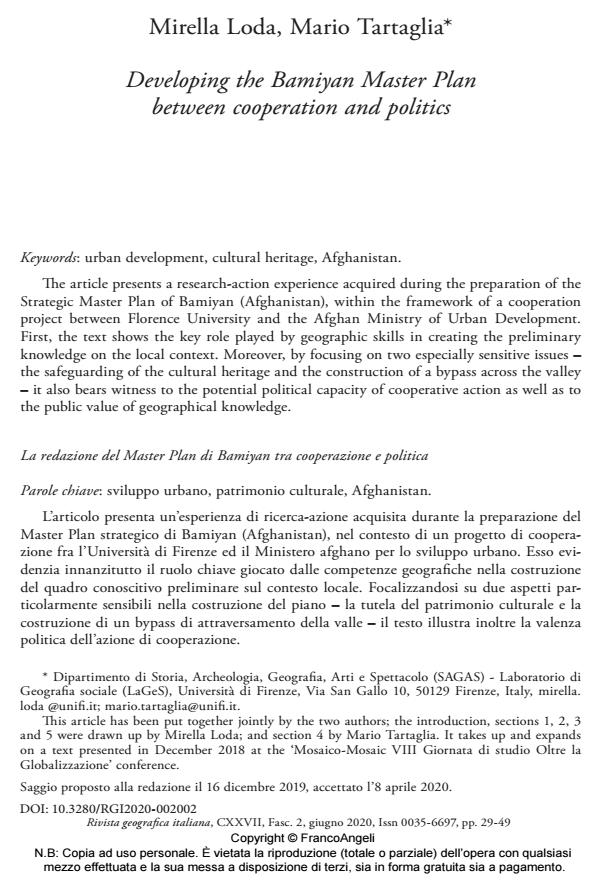La redazione del Master Plan di Bamiyan tra cooperazione e politica
Journal title RIVISTA GEOGRAFICA ITALIANA
Author/s Mirella Loda, Mario Tartaglia
Publishing Year 2020 Issue 2020/2
Language English Pages 21 P. 29-49 File size 772 KB
DOI 10.3280/RGI2020-002002
DOI is like a bar code for intellectual property: to have more infomation
click here
Below, you can see the article first page
If you want to buy this article in PDF format, you can do it, following the instructions to buy download credits

FrancoAngeli is member of Publishers International Linking Association, Inc (PILA), a not-for-profit association which run the CrossRef service enabling links to and from online scholarly content.
The article presents a research-action experience acquired during the preparation of the Strategic Master Plan of Bamiyan (Afghanistan), within the framework of a cooperation project between Florence University and the Afghan Ministry of Urban Development. First, the text shows the key role played by geographic skills in creating the preliminary knowledge on the local context. Moreover, by focusing on two especially sensitive issues - the safeguarding of the cultural heritage and the construction of a bypass across the valley - it also bears witness to the potential political capacity of cooperative action as well as to the public value of geographical knowledge.
Keywords: Urban development, cultural heritage, Afghanistan
Mirella Loda, Mario Tartaglia, Developing the Bamiyan Master Plan between cooperation and politics in "RIVISTA GEOGRAFICA ITALIANA" 2/2020, pp 29-49, DOI: 10.3280/RGI2020-002002